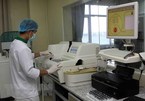Nguyen Truong Son, Deputy Minister of Health, discussed with VIR’s Bich Thuy the future orientations and action plans to realise this on the back of free trade agreements.
 |
| Nguyen Truong Son, Deputy Minister of Health. |
Last year was certainly a challenging one for the healthcare sector. How exactly did Vietnam go about controlling the biggest pandemic in decades?
COVID-19 has become an unprecedented challenge to public health, negatively affecting economies worldwide and all aspects of socioeconomic development.
There have been great pressures on the healthcare system and related services in the prevention and fight against the pandemic, especially before vaccines and specific treatment drugs were available. Requirements of new technologies in prevention and treatment were needed as well as protection of public health to ensure strong manpower for economic development, social security, and political stability.
Increasing capacity of the public health system was also required, as well as cooperation in research and production of a vaccine in a safe and effective manner.
Vietnam is one of the very few countries to have successfully contained the pandemic. Under the directions of the Party, the government, and the National Steering Committee for COVID-19 Prevention and Control, the healthcare sector has actively worked with ministries and relevant agencies as well as cities and provinces on implementing strong measures and solutions with the principle of four on-site actions which proves its effectiveness in the fight.
Also in 2020, the sector implemented a telehealth scheme, opening a new period in diagnosis and treatment, helping locals get better access to quality services at grassroot facilities, and narrowing the gap in the number and skills of healthcare practitioners between central and grassroot units. Moreover, Vietnam was one of the first countries to research and manufacture quick test kits for the coronavirus, and has also made initial success in researching and testing Nano Covax - the first Vietnamese-made COVID-19 vaccine on humans.
What policies does the healthcare sector have to further ease administrative procedures and thus create a more favourable business environment for pharmaceutical and medical devices players?
The Ministry of Health (MoH) is actively working on measures to cut investment and business conditions, and administrative procedures in the sector in the 2021-2025 period. On December 31, the MoH issued Circular No.29/2020/TT-BYT amending, supplementing, and removing legal documents issued by the health minister, or jointly-issued ones. This circular amends some regulations of 11 other circulars enacted on management of pharmaceuticals, cosmetics, food, and HIV towards creating favourable conditions for enterprises which have been hit by COVID-19, while intensifying state management on quality of imports.
Along with digital transformation and IT application in healthcare, the circular allows businesses to make e-submission of documents and provide links to enable authorised agencies to make on search and post-check. This circular also abolished 28 other circulars which have invalid regulations and are no longer suitable with all the fields of the ministry.
According to estimates from the Vietnam Institute of Economics, Circular 29 will help enterprises save 2.4 million working days, and VND625 billion ($27.17 million) annually. This reflects the new management mode, making it ready to effectively respond to the unprecedented difficulties caused by the pandemic.
Despite more favourable policies, private and foreign investment into the healthcare sector are still lower than expected. What are the main solutions to be taken in order to increase its attraction?
In this development period, private and foreign investment is an inevitable trend and suitable with socioeconomic development. However, private domestic and foreign investment in the healthcare sector has remained lower than growth potential and social demands.
In order to increase its attraction to the private sector and foreign investors, thus helping ease overloads at public-run health facilities and financial burden from the state budget – as well as create more selections for people in diagnosis and treatment services – the sector will focus on several issues.
Firstly, in order to develop the private healthcare system, we need specific policies to encourage the private sector to invest, especially in non-profit services, because the field is not yet attractive to investors due to high risks and low profitability. Moreover, it needs supporting policies for private and foreign financiers for their investments.
Second is to create a healthy business environment in support policies and technology transfer among private and public healthcare facilities. The incentive policies such as tax, credits, and land should be built to encourage non-profit private healthcare models and facilitate investors to fully approach stimulus loan packages, especially for facilities with specific specialties, and advanced medical equipment.
Third is building a list of fields and projects that are given priority to investment in the upcoming development period, focusing on health facilities, preventive health, pharmacy, medical devices, training, food safety, grassroot healthcare facilities, IT, and medical environment management.
They have to be in line with the targets of the country’s socioeconomic development plan in the 2021-2025 period, with a vision towards 2030, as well as national master planning and master planning of sectors, regions, and provinces so as to create a motivation to spur investment in the healthcare sector.
Fourth is to renovate the investment structure and investment modes from the state budget, and strengthen the mobilisation of investment capital from different resources to serve the development of the healthcare system. Diversifying public-private partnership models and ensuring transparency, healthy competition, and fair treatment between the public and private sector in supplying health services is vital. We also must encourage organisations and private investors to fund health facilities (including in primary healthcare), focusing on the supply of high-end services, advanced technology, and customised services.
Lastly there is a need to rearrange the organisational structure and network of medical facilities in a streamlined direction to increase their efficiency and better global integration to harmonise private-public health development.
A number of new-generation free trade agreements (FTAs) like the one made with the EU, as well as the Regional Comprehensive Economic Partnership, are expected to increase market access to international investors. How will these open up opportunities in the healthcare sector?
Vietnam’s signing of FTAs have made impacts on five areas in the sector. First is the policy. New-generation FTAs play an important role in creating an open investment environment for domestic and international investors, encouraging domestic businesses to make changes and take initiatives in finding new ways to better integrate and compete with foreign businesses, and giving a push to domestic manufacturing to meet the requirements of the home market and exports to member countries of FTAs, as well as others worldwide.
Moreover, they also help Vietnam attract investment from more powerful investors, and multinational corporations in the region and worldwide in pharma production and business trading in Vietnam to meet local demands and for exports.
Second is to increase people’s access to drugs and national healthcare coverage. When local manufacturing develops, health facilities and locals have more selection of high-quality drugs and vaccines with high safety, efficacy, and reasonable prices, thus strengthening care and protecting people’s health, as well as increasing national healthcare coverage.
Third is development of local production. When Vietnam signs FTAs, competition from foreign rivals will prompt domestic Vietnamese counterparts to change their mindset, find new business governance, and apply new technology in production and business activities so as to join the global value chain.
In this context, businesses that are active and know how to grasp opportunities well will benefit from commitments related to trade in goods and services, incentive policies of member nations, and technology transfer from developed countries to develop domestic production on par with international norms and technical standards, thus promoting stable growth and increasing value.
On the contrary, businesses which fail to make changes to catch up with the trend may fall into recession, or even go bankrupt. FTAs are considered a filter, eliminating weak players and maintaining strong ones.
Fourth is job opportunities. Encouraging and attracting foreign investment creates a favourable business climate for foreign investors, and then creates more jobs for the locals and increases income for labourers. However, if labourers themselves fail to tap into the opportunity and make better adaptation, they will be not able to meet the high requirements about skills, knowledge, and others in the more professional working environment.
In addition, with FTAs, labourers have opportunities to select better jobs, thus possibly leading to movements to well-paid jobs (often in foreign-invested enterprises). This urges domestic businesses to have better policies to recruit and retain skilled labourers to serve local production and exports.
Finally is the impact on the environment and society. FTAs leverage foreign investment in Vietnam – however, the incentive policies should go in hand with strict rules on environmental protection (for example, the regulations on waste treatment in production) and social security (for example, network security or violations in advertisements causing negative impacts on consumers). Through these agreements, tariff barriers are gradually removed through a roadmap. VIR
By Bich Thuy

Vietnam's healthcare sector promising for private investment
The rising demand for healthcare has made Vietnam a promising destination for domestic and foreign investors.

New PPP model for universal healthcare
In anticipation of the growing importance of public-private partnership, Vietnam and partners are working on a new model to strengthen primary healthcare services as the foundation to achieve universal healthcare coverage by 2030.